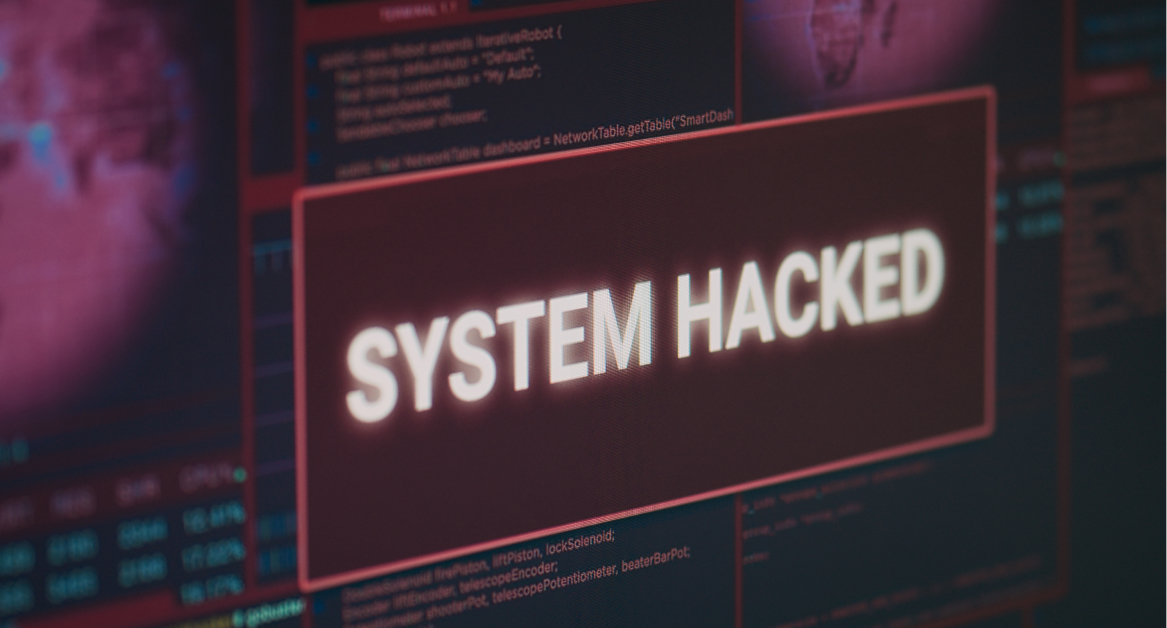Your remote employees spot a suspicious email, swiftly avoid a cyber threat, and inform your IT team—all without breaking a sweat.
Sounds great, doesn’t it? With the right cybersecurity awareness training, this could be your reality.
Cybersecurity training isn’t just about stopping scary hackers. It’s about empowering your team to work securely, no matter where they choose to log in. When your team knows how to spot phishing attempts, avoid social engineering tricks, and practice good security habits, they become your company’s best defense.
In this article, we’ll explore why cybersecurity awareness training is so valuable for remote teams.
Why cybersecurity awareness matters for remote teams
Cybersecurity awareness isn’t just about preventing attacks—it’s about creating a confident, secure remote workforce. Here’s why it’s particularly important for distributed teams:
Remote teams face unique risks
Employees working remotely often use personal devices or unsecured networks. This flexibility is convenient but creates extra opportunities for cyber threats. Cybersecurity awareness training teaches your employees to recognize these unique vulnerabilities, keeping your data safe wherever they are.
Humans are your first line of defense
Technology alone can’t fully protect your company. Most cyber incidents, including data breaches, begin with human error. When your employees understand threats like phishing scams or social engineering, they become an active defense against cyber attacks.
Cybersecurity is a team sport
When every employee understands cybersecurity best practices, your entire organization benefits. Training doesn’t just help individuals—it creates a strong, unified culture of security. This collective awareness significantly reduces your organization’s overall risk.
Staying ahead of evolving threats
Cyber threats constantly change. Regular cybersecurity awareness training programs, along with using tools like a CAA checker to secure your domains, ensure your team stays informed about new threats and vulnerabilities, helping them respond quickly and confidently.
Investing in cybersecurity awareness training today prepares your remote teams to protect your company tomorrow.
10 Best practices for implementing cybersecurity training

1. Set clear objectives
Before rolling out your cybersecurity awareness training programs, clearly define your goals. Ask yourself: What specific threats and vulnerabilities do you want to address? Is your priority preventing phishing attacks, improving password hygiene, or preparing employees for incident response?
💡 Tip: If phishing attacks are your biggest concern, set measurable goals like “reduce employee clicks on simulated phishing emails by 50% within three months.”
2. Involve company leadership
Cybersecurity awareness is most effective when championed from the top down. When executives, founders, or team leaders openly participate in training sessions, employees see security as an essential part of the company’s culture, not just another task on their checklist.
🔍 Example: Have your CEO or senior managers complete training first, then publicly share their experience or results with the team.
3. Use interactive content
Consider gamifying your training—use quizzes, games, and real-world scenario simulations, such as a phishing simulator, to actively involve your team. You can also integrate a video generator to create short, engaging explainers that visually break down complex cyber security concepts. Interactive training leads to higher engagement and significantly improves retention of critical cybersecurity concepts.
💡 Tip: Use gamified platforms like KnowBe4 or Infosec IQ, which offer quizzes, games, and interactive challenges to maintain employee interest.
4. Deliver bite-sized, frequent training sessions
Remote employees often juggle multiple tasks throughout the day, so lengthy training sessions can quickly become overwhelming. Instead, provide cybersecurity training in shorter, more manageable modules.
Regular, bite-sized sessions—10 to 15 minutes each—delivered monthly or quarterly, keep cybersecurity top-of-mind without causing burnout.
🔍 Example: Offer quick 10-minute monthly refresher courses on specific topics, such as “Identifying phishing emails” or “Secure remote login tips.”
Tip: Turn each refresher into a short screen-capture explainer with an AI video generator so teammates can follow along visually.
5. Leverage cybersecurity awareness month
October is recognized globally as cybersecurity awareness month, making it the perfect opportunity to reinforce your company’s security culture. Use this month to hold special training events, workshops, or cybersecurity challenges.
💡 Tip: Host special webinars, run awareness challenges, or send weekly cybersecurity tips throughout the month to reinforce best practices.
6. Provide targeted training based on roles
Different roles face different cybersecurity risks. Tailoring training sessions to specific departments or job functions ensures relevance. By customizing training, you’ll boost both engagement and effectiveness.
🔍 Example: Provide finance staff extra training on identifying social engineering scams targeting financial information, while marketing teams get guidance on securely managing social media accounts.
7. Establish clear policies and guidelines
Cybersecurity training must be supported by clear company policies. Employees need concrete guidelines on acceptable practices, device usage, password management, and incident response procedures. Make these guidelines easily accessible, and regularly reference them in training sessions.
💡 Tip: Create an accessible, straightforward “Cybersecurity Do’s and Don’ts” checklist that employees can reference anytime.
8. Monitor and measure results
Measuring training effectiveness is critical to improvement. Track employee participation rates, quiz scores, and response to simulated cyber threats. Regularly review this data to identify knowledge gaps and adjust training content accordingly.
🔍 Example: Use phishing simulations monthly to track improvement, identify weak points, and adjust future training sessions accordingly.
9. Celebrate employee successes
Positive reinforcement goes a long way in motivating employees and building a security-conscious culture. Celebrating employee successes shows appreciation and encourages continued vigilance.
🔍 Example: Publicly praise team members who report phishing attempts promptly or reward the department with the highest training participation rate each quarter. Acknowledge successes in team meetings or internal newsletters.
10. Encourage continuous feedback
Employee feedback keeps your cybersecurity training relevant and engaging. Employees who feel their opinions are valued are more likely to participate actively and openly.
💡 Tip: Use anonymous surveys after each training session to ask employees what they found useful and what could improve. Actively incorporate this feedback into future sessions, so employees feel heard and training remains effective.
Recommended tools for remote cybersecurity training
Implementing effective cybersecurity awareness training programs for remote teams requires the right tools. Here are some top tools that can help enhance your cybersecurity training efforts:
1. KnowBe4
KnowBe4 offers a comprehensive platform that includes simulated phishing attacks, interactive modules, and assessments. Its user-friendly interface and extensive library of content make it suitable for organizations of all sizes. The platform’s analytics help track progress and identify areas needing improvement.
2. Infosec IQ
Infosec IQ provides over 1,400 cybersecurity training courses, including live, instructor-led sessions and real-world scenarios. The platform’s customizable content and reporting features allow for targeted training that aligns with specific organizational needs.
3. SC Training (formerly EdApp)
SC Training offers microlearning modules that are mobile-friendly and easily digestible. Its gamification features, such as quizzes and leaderboards, increase engagement and retention. The platform also includes a course library and analytics to monitor learner progress.
4. CyberHoot
CyberHoot is designed for small to medium-sized businesses, providing a straightforward approach to cybersecurity training. It offers automated training assignments, policy management, and phishing simulations, helping organizations improve their security posture without overwhelming resources.
5. EC-Council Aware
EC-Council’s Aware platform delivers comprehensive cybersecurity awareness training, including modules on phishing, social engineering, and data protection. The platform’s interactive content and assessments help reinforce learning and measure effectiveness.
6. NIST’s National Initiative for Cybersecurity Careers and Studies (NICCS)
NICCS offers a vast repository of free cybersecurity training resources, including courses, webinars, and tools. It’s an excellent starting point for organizations looking to build foundational cybersecurity knowledge among employees.
7. Phishing simulation tools
Regular phishing simulations are crucial for assessing employee readiness and reinforcing training. Tools like Cofense PhishMe and Proofpoint Security Awareness Training provide realistic phishing scenarios, helping employees recognize and respond appropriately to phishing attempts.
Start building cybersecurity awareness today
Cybersecurity awareness training is essential—not optional—for remote teams. The right training helps your employees spot cyber threats, respond effectively to incidents, and protect your organization’s sensitive data from breaches.
But simply running a training session isn’t enough.
You need to measure its effectiveness regularly. Track employee engagement through quizzes, phishing simulations, and feedback surveys. Look at metrics like reduced incident rates, quicker response times, and employee confidence in handling cyber threats. Use these insights to continually improve your training.Platforms like Esevel streamline this process by integrating cybersecurity support directly into your IT management. From device procurement and global hardware support to comprehensive cybersecurity measures, Esevel empowers remote teams to stay secure, productive, and informed.







